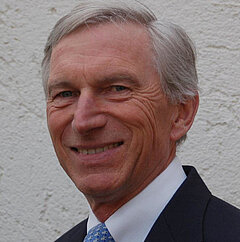The Consumer Electronics Show (CES) should actually be called the Connected Car Electronics Show (CCES). Why? The technology highlights from car manufacturers and suppliers are increasingly stealing the show from innovations in typical household appliances. At least that's the impression you get when you look at the relevant media reports. The automobile is currently reinventing itself, and not just in the switch from combustion engines to electric drives and not just in the journey from A to B, but above all in the question of how customers can make the best possible use of their time in the vehicle. This involves innovative interior, operating and display concepts and the technical potential of digitalization and connectivity. So it is only logical to talk about the "smart phone or smart device on wheels".
Mobility, i.e. locomotion, takes a back seat and the "joy of driving" is replaced by the "joy of surfing". For example, the manufacturer Byton equips its M-Byte with a 48-inch screen that extends from the left to the right A-pillar. If the vehicle is not only used for mobility, but is also understood as a digital marketplace, this naturally opens up completely new business options for the manufacturer. Vehicle occupants have access to all kinds of services via networking, for which they have to pay a fee. As a result, content management in the cockpit is becoming increasingly important for the manufacturer's sales success, creating another profit center alongside sales, aftersales and financial services. And with very attractive returns, as the example of Apple shows. Around the iPhone, the Apple Store, Apple Music, Apple TV+ and Apple Pay form an ecosystem of services that cross-fertilize each other, enhance the actual hardware and bind the customer to the brand.
In this respect, the car is a real data octopus. It collects a vast amount of data from many sources, from which demand-oriented services can be derived. For example, engine operation (including diagnostic data, error messages), vehicle usage (including parking positions, intensity of pedal operation) and the driver's personality profile (including contacts, call lists, radio stations listened to, data from streaming services used). A targeted evaluation of this information leads to new on-demand offers, such as "over-the-air" software updates, push-driven maintenance appointments in the workshop, time-limited activation of additional horsepower and dynamic lighting packages for night-time driving, as well as financing and insurance offers based on the pay-as-you-drive principle. The customer benefit here arises directly from the direct availability of the services.
But there are also virtually no limits to the possible solutions in the area of infotainment. For example, video and audio streaming, conference calls with video and audio from vehicle to vehicle, route suggestions with hotel selection and booking according to the specified budget. Quick and easy access to the respective application via the vehicle-specific platform, for example through voice or gesture-controlled user input, is critical to success. The more open the digital ecosystem in the vehicle is designed for third-party providers, the more attractive the marketplace is for the user and the higher the revenue for the operator. The income from sharing agreements between the manufacturer and selected cooperation partners increases accordingly. In the mobility world of tomorrow, the USP from the customer's perspective is shifting away from the physical hardware of the vehicle towards the digital performance experienced during the journey. The disruption of the automotive business model is in full swing, as the example of Tesla shows.
In a nutshell: digital networking is disrupting traditional value chains and bringing vehicle manufacturers and service providers closer together. The processing of vehicle and customer data opens up new on-demand business areas and profit potential.
Sources
1 M. Bentenrieder et al, The digital Automaker, Oliver Wyman 2017




